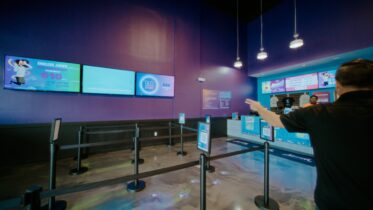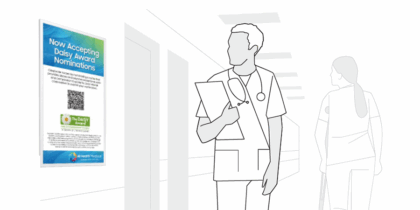When visiting the local Department of Motor Vehicles (DMV) office, you never know how long you’ll be there. DMV appointments have become citizen rituals everyone experiences, testing both patience and perseverance. However, digital signage and related DMV technology innovations can remove the frustration and tedium from a visit to the DMV or other government agency offices.
A Fresh Perspective
The average DMV experience involves showing up, receiving a number and waiting to be called. Then, you wait some more.
Here’s the experience with DMV technology innovations such as digital signage properly applied: You show up, receive a quick sense of wait times and watch screens displaying your spot on the list, keeping you informed about alternative services and new features.
The DMV and other government offices with steady streams of visitors are perfect environments for applying digital signage and related technologies to improve experiences. In many cases, the solution is as simple as giving customers a sense of where they sit on a wait list.
However, technology in this type of environment can go much further than just managing queues. They can also prepare people for their transaction, make them aware of other services, suggest speedy alternatives when possible, bridge language gaps or provide content to speed up the wait.
Consider Yourself Warned
New generations of outdoor signage and outdoor-facing displays make it possible to tie into real-time data on wait times, conveying status and various conditions within a DMV office to customers in parking lots or approaching pedestrians. For example, a high-bright display could cut through full midday sun to tell approaching customers the average wait time is 67 minutes and steer them toward alternative services, such as online renewals or mobile app-based registration services.
Good to Go?
Some busier state DMV offices assign staff to work as greeters at entry areas, intercepting people and ensuring they have the required paperwork for a license renewal or other registration process. DMV staff don’t want people sitting down, waiting for their turn and finding out they’ll need to come back with more information when they reach the counter.
Digital signage offers a few approaches to free up those greeters. Simple digital signs can steadily inform applicants about what they need to have in hand, and interactive displays can itemize what’s required by category. Interactive signs or kiosks can also sort people by what they need, streamlining processes by assigning specific wait numbers and counters.
Sticky Signs
Content marketers like to talk about sticky content, which is information people keep returning to. For instance, signs on subway platforms showing when the next train is approaching are sticky, as are queue management and status screens in DMV wait rooms. People will look at those screens over and over, because their eyes keep coming back to the sticky content, an optimal time to educate motorists about DMV services and practical tips. It’s a focused, contextually rich moment to drive awareness about motoring issues, government services and other targeted initiatives, like organ donor cards and voter registration.
Monetization or Cost Reallocation
Some DMV technology systems work with third-party companies that help install screens and develop messaging and capabilities aimed at the reliably large and broad audiences coming through DMV branch doors every day. Sometimes the media company will install the equipment for free and share revenues from third-party advertisers who target motorists with their marketing.
The advertising revenue generated by an ad-based digital signage network tends to be relatively small in the context of daily fees generated by DMV offices, but it helps the agency branches achieve a digital signage system without allocating its own capital or operating budgets.
Bridging Language Gaps
In certain parts of the country, the need to communicate in both English and Spanish is not only obvious but mandated. However, broader multilingual services aren’t always available, though they’re needed by large pools of recent immigrants.
Interactive digital signage lowers language barriers and streamlines service delivery. Imagine a couple recently emigrated from northern China trying to register their first motor vehicle. The DMV may not have anyone fluent in Mandarin available, but an interactive screen preloaded with multilingual information could communicate what they need in their first language.
It’s All About Data
Digital signage networks are evolving from messaging vehicles built around preplanned, scheduled content to systems that use the data from internal systems and external resources to shape the message according to the audience and dynamics of the place. In venues like bustling government service centers, digital signage networks and their displays are ideally suited to harvest, process and reflect information to improve the service experience. This Internet of Things technology combined with digital signage has the potential to revolutionize the DMV, transforming it into a smooth, streamlined process center and making life easier for visitors and workers alike.
Learn about some of the other cutting-edge technology applications of for government on our solutions page.








